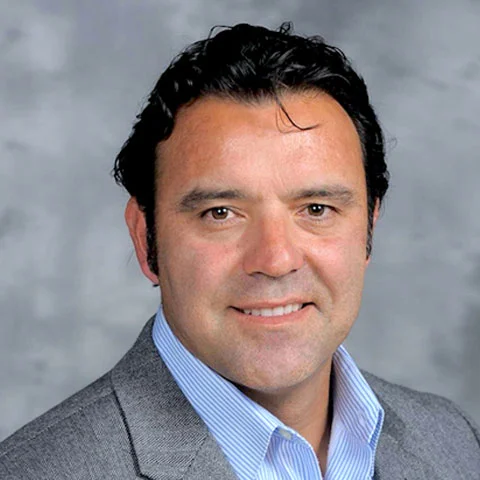Working from home has changed a lot of things
Yup, I said it. For decades, jobs were tied to offices, and those offices were tied to a few select locations that your company selected. Where you lived was a direct function of where you wanted to work. Even those who were a glutton for punishment could take a job with a two-hour commute, but that would be rough: 4 hours of commuting, 8 to 9 hours of work, and BOOM – half the day was gone. Sleep for 6 to 7 hours, and you get 5 wonderful hours to take care of whatever it is you do in that free time. 5 amazing hours.
But what if your employer could almost double your free time and get the same amount of work out of you, would that sound like a good plan for all parties involved?
That is essentially what happened with COVID-19. COVID wasn’t a gentle nudge for companies to embrace a work from home culture, COVID shoved every company as hard as possible and screamed at the top of its lungs “YOU’RE DOING THIS!!” and in the process, destroyed the decades’ old management philosophy of Command and Control: “If I can’t see you, you must not be working.”
From traditional brick and mortar industries like banks and credit unions to leading software companies like Facebook or Salesforce, companies are adjusting to this pandemic and rethinking what the future of work holds. Sure, some companies will go back to prior work configurations, but many won’t. And for thousands of workers – why would you? It’s an honest discussion that both employers and employees should be having. A recent WSJ Management article posed that same question: “When workers can live anywhere, many ask: Why do I live here?”
Working from home is the new normal for most of America, heck most of the world, but it is not unique for us at Patra – it has been 15 years in the making and 15 years of perfecting a global workforce from the CEO to the receptionists.
Working remote wasn’t designed by our CEO John Simpson to be a business continuity plan, nor was it a reaction to a pandemic or natural disaster; instead, it was created because he believes that the best talent can be found in all 50 states. We are not limited to physical boundaries; we are only limited in our ability to find the right talent wherever they reside. John realizes that allowing the most talented people to work from home makes his employees more engaged and loyal because we offer a real work/life balance.
For years in past companies, whenever I joined a conference call, it was just that – a call. I never saw who I was talking too, nor did they see me. I didn’t know if others were joining, if that person was multi-tasking or doing whatever. It was just a voice. That changed when I started working at Patra. From day one, we had video calls. One-on-one’s, interviews, team meetings, client meetings, implementations, support, quick impromptu questions – doesn’t matter, all videos, all the time. And I love it. Seeing your peers and your customers has enormous advantages.
- Be present with your audience. No multi-tasking or not paying attention.
- You have to be somewhat presentable. Sure, you can wear what you want from your waist down, but you take a bit more pride in your appearance than when you dial-in to a conference call.
- You have more empathy, compassion, and welcome a bit of chaos – our homes are not an office, disruptions happen. Embrace it, acknowledge it, and then work through it.
- We became more human, family-based, and less co-worker, even when we are thousands of miles away.
- (almost) Nothing is lost in translation. You can see personalities, frowns, smiles, body language, and get immediate visual feedback to address issues, questions in real-time, and not be disengaged or end with unresolved problems.
Leah Ohodnicki, SVP and US Head of Producer Management for the Argo Group echoed my sentiments in an article in Insurance Journal America, “Each situation is unique, but considering the myriad of possible distractions in the home currently – many of them completely unavoidable – now is a time to manage with empathy.”
So, when COVID hit, Patra was already 100% remote working. Because we already had a culture of working from home, we were able to quickly move our offshore staffers to remote working with little disruption to the core business. We knew what it took, what was needed, what was expected, and every manager from the CEO down knew how to engage workers in a remote environment.
Many of you reading this may be doing so on one laptop, using the video camera built into the laptop with your cell phone headphones. I’d say this is ‘forced remote working’. And while that is sufficient, it is not efficient. Let me explain. Two days before you start at Patra, a beautiful box, maybe 3′ x 3′ x 3′, arrives at your front door. Inside are the following (contents may vary by job but not much):
- Laptop
- Docking Station
- Wireless Mouse
- Wireless or Wired HD Headset
- HD Video Camera and mount
- 2 Monitors
- Extra battery cord for the laptop computer
- Keyboard
- Surge protector power strip
- Android or iOS-based work phone pre-set with your work number (if you want to have work phone vs. use your device
- Printer
It may not seem like much, but that box is equal to any physical office set-up I’ve ever had, and it implies a huge amount of trust even before I sent my first email. Patra trusts its employees to do the best work possible. That trust turns into commitment from the employee, and that commitment and dedication to the company is one of the reasons we have been able to be there for our clients because our work from home environment isn’t new for Patra. A recent Wall Street Journal article was titled: “Silicon Valley’s Next Big Office Idea: Work from Anywhere”.
Well, I hate to break it to you Silicon Valley, what is new to you is old to us.
If your company is struggling with the new norm or you are worried about the pending fall school year, give us a call. We’d love to see your smiling face, over video of course.
About Patra
Patra is a leading provider of technology-enabled insurance outsourcing services and AI-powered software solutions. Patra powers insurance processes by optimizing the application of people and technology, supporting insurance organizations as they sell, deliver, and manage policies and customers through our PatraOne platform. Patra’s global team of over 6,500 process executives in geopolitically stable and democratic countries that protect data allows agencies, MGAs, wholesalers, and carriers to capture the Patra Advantage – profitable growth and organizational value.

